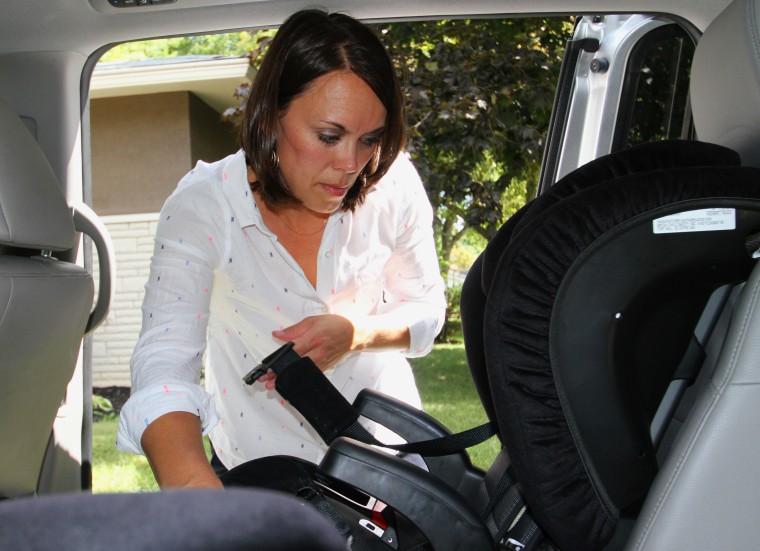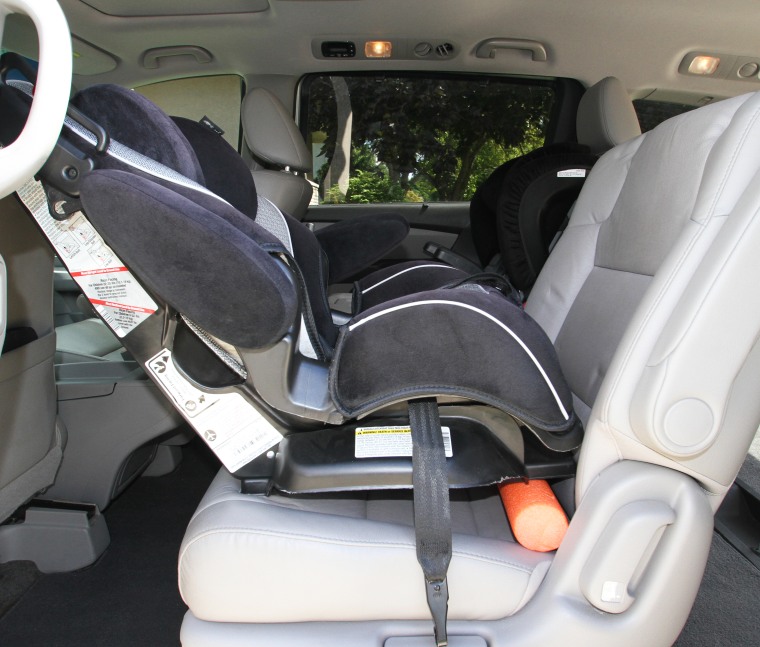You’ve done your homework—you checked the ratings for the safest car seat and installed it in the backseat of the car. Your job is done. Not so fast. A study finds sometimes the car seat doesn’t fit properly in the car.
“The most common problem is the mismatch between the angle of the child restraint … and the angle of the seat pan,” says Julie Bing, lead author of the study, which will be published in the October issue of “Traffic Injury Prevention,” and a research engineer at Ohio State College of Medicine’s Injury Biomechanics Research Center.
Bing and her colleagues examined the dimensions of 61 vehicles and 59 child car seats to try to determine possible incompatibilities. Mixing and matching all possible variations works out to 3,599 combinations.
In most cases, 63.3 percent of the time, the base of the car seat fit snugly in the car. But 36.7 percent of the time, the seat wasn’t at a proper angle.

“It’s no big surprise that not every child restraint fits into every vehicle,” she says.
Making sure that a child seat is at the proper angle remains essential for the seat to provide the most protection for a child.
“[A] rear facing car restraint was sitting upright and that could be potentially dangerous that the head can fall forward and cut off the airway,” she says.
While this might seem problematic, Bing says there is an easy solution.
Parents can place a rolled up towel or pool noodle behind the seat—car seat manufacturers even recommend it. She says it remains safe, but it puts more emphasis on parents. To avoid an improper fit, Bing recommends that people buy a seat well suited for the car. A bulky car seat likely does not mesh with a tiny car. Some stores even allow parents to try to the seats before purchase.

“The safest child restraint is the one you are going to use correctly every single time,” she says. “We not trying to say these are bad products. They are very good and do well—more than parents are even aware of.”
The study also found that 33.6 percent of the time forward-facing car seats rest at an awkward angle thanks to the headrests. In some cases, the headrests can be removed to assure the seat sits properly. Bing says that buying a car seat that sits lower than the headrest can also help.
Dr. Roopa Thakur, a pediatrician at Cleveland Clinic Children’s, says understanding how to use a car seat remains essential. Improperly installed car seats can cause the seatbelt to dig into the abdomen, causing pancreatitis or bladder injuries, or tighten around the neck, cutting off the airways. She says if parents feel stressed or confused by car seats they should take them to car seat checks.
Many hospitals, fire departments, EMS stations, and police stations offer car seat checks and people can find the closest location by checking this website.
“Whenever there is a question, it is always good to have it done by someone who has experience,” she says. “When the car seat is properly strapped in it provides a nice safe place for [children] to be couched in and they are relatively stable in that particular spot.”